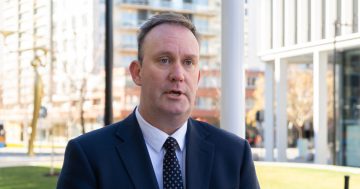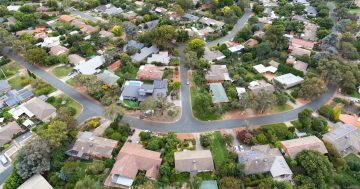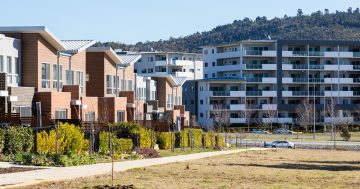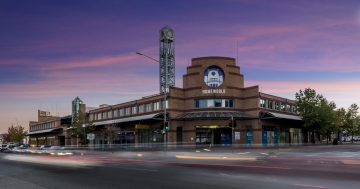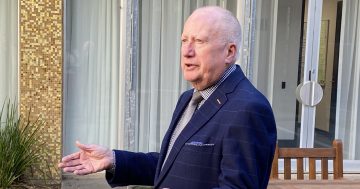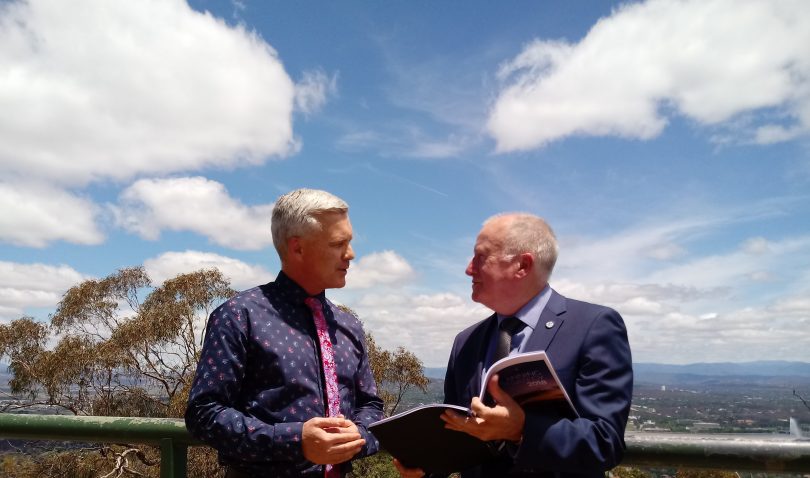
Chief Planner Ben Ponton and Planning and Land Management Minister Mick Gentleman at the launch of the new Planning Strategy on Mt Ainslie. Photo: Ian Bushnell.
The densification of Canberra is set to gather pace with the great majority of new housing in the ACT to occur within existing suburbs as urban infill or through the carving up of large residential blocks for dual occupancy development. The ACT Government Planning Strategy Refresh released today says about 100,000 new homes will be needed between 2018 and 2041 to cater for a projected population of 589,000, equating to almost 12 new homes a day.
It outlines a ‘compact and efficient’ city, where urban spread will be limited and growth catered for through increased density around town and group centres and along major transport routes, with up to 70 per cent of new housing built within the existing urban footprint.
The only new greenfield areas in the strategy are in Canberra’s west.
As Chief Minister Andrew Barr has often argued, the strategy says the continuous greenfield expansion of Canberra is unsustainable.
“This growth pattern would not support a compact and efficient city. It would increase our travel times and decrease transport options, increase our ecological footprint and infrastructure servicing costs and would not support equitable access to services,’’ it says.
Planning and Land Management Minister Mick Gentleman believes the strategy, including the 70/30 housing split, strikes the right balance and is what the community has been asking for.
He rejected suggestions that essential bush character of Canberra will be compromised.
“The bush capital is here to stay, that’s what Canberrans want to see and that’s what we want to deliver as well,” he said.
Mr Gentleman said infill development was cheaper and would deliver more affordable and diverse housing choices for the community.
To suggestions that people seeking a detached house instead of an apartment or townhouse might cross the border, Mr Gentleman insisted there would be plenty of opportunity for people to reside the way they want to in the ACT.
The strategy is at pains to stress that while there will be increased density, care will be taken to retain the bush capital setting and access to green space.
It says that with climate change already impacting the city, Canberra will need to future-proof itself to mitigate the urban heat island effect with living infrastructure, such as increased tree coverage, parks and waterways, as well as green roofs and walls.
The risks of climate change will be incorporated into urban planning and design processes for major infrastructure projects and new estates, as well as ‘climate-wise’ guidelines being provided to developers, builders and tradespeople.
Chief Planner Ben Ponton that next year’s review of the Territory Plan would deal with the ‘nuts and bolts’ of where these key areas would be developed and would be seeking real outcomes.
“I have made it very clear both to the community and industry that what we’ll be looking for there is an outcomes-based plan,” he said. “What we’re hearing is that those high-quality public spaces are incredibly important to people. And what we’ve seen all over the world is investment in those high quality public spaces is critically important if we expect people to live in height in the city.”
Mr Ponton said the planning authority would be working with industry and the community on these measures, which would be a necessary requirement of infill development to ensure high-quality public spaces.
The strategy says there is potential for about 29,000 new homes in existing greenfield areas, sufficient until the second half of the 2030s.
It identifies new areas for urban development in the west of Canberra, beyond the Weston Creek and Molonglo districts, despite it being in the path of the devastating 2003 bushfires.
“This area appears to have few significant environmental and infrastructure constraints and is close to existing urban areas, providing good access to facilities, services and employment,’’ it says.
It rules out West Murrumbidgee, Western Greenway, Central Molonglo and other areas due to the ‘complexity of environmental, landscape and community values’.
The Kowen Plateau was also not considered due to significant infrastructure and sustainability issues related to its distance from urban Canberra.
But these areas may be re-examined in future reviews of the Planning Strategy.
The strategy foreshadows a major change to Canberra residential suburbs with the opening up of RZ1 and RZ2 zones to dual occupancy development, taking into account factors such as block sizes, appropriate residential densities, character and streetscape, access to public transport, house sizes, solar access and site access.
Expect more townhouses and unit development near local shops, while the Town Centres and transport corridors, particularly for light rail, will see more high-rise apartment blocks.
The strategy recommends an investigation of the City-Woden light rail route for potential urban intensification, as has occurred along the Northbourne Avenue corridor.
While this all points to a more crowded city, the strategy says infill could provide opportunities for walking and cycling, promoting a healthy lifestyle and contributing to liveability.
It also recommends an overhaul of the ACT’s centres hierarchy policy, which Canberra appears to have outgrown.
Calling Civic the heart of Canberra, the strategy sees it developing as a true city centre, supporting the growth of commercial and residential developments and the City Renewal Authority’s initiatives to revitalise the city, while retaining green space and sunshine.
Click here for the full report.













